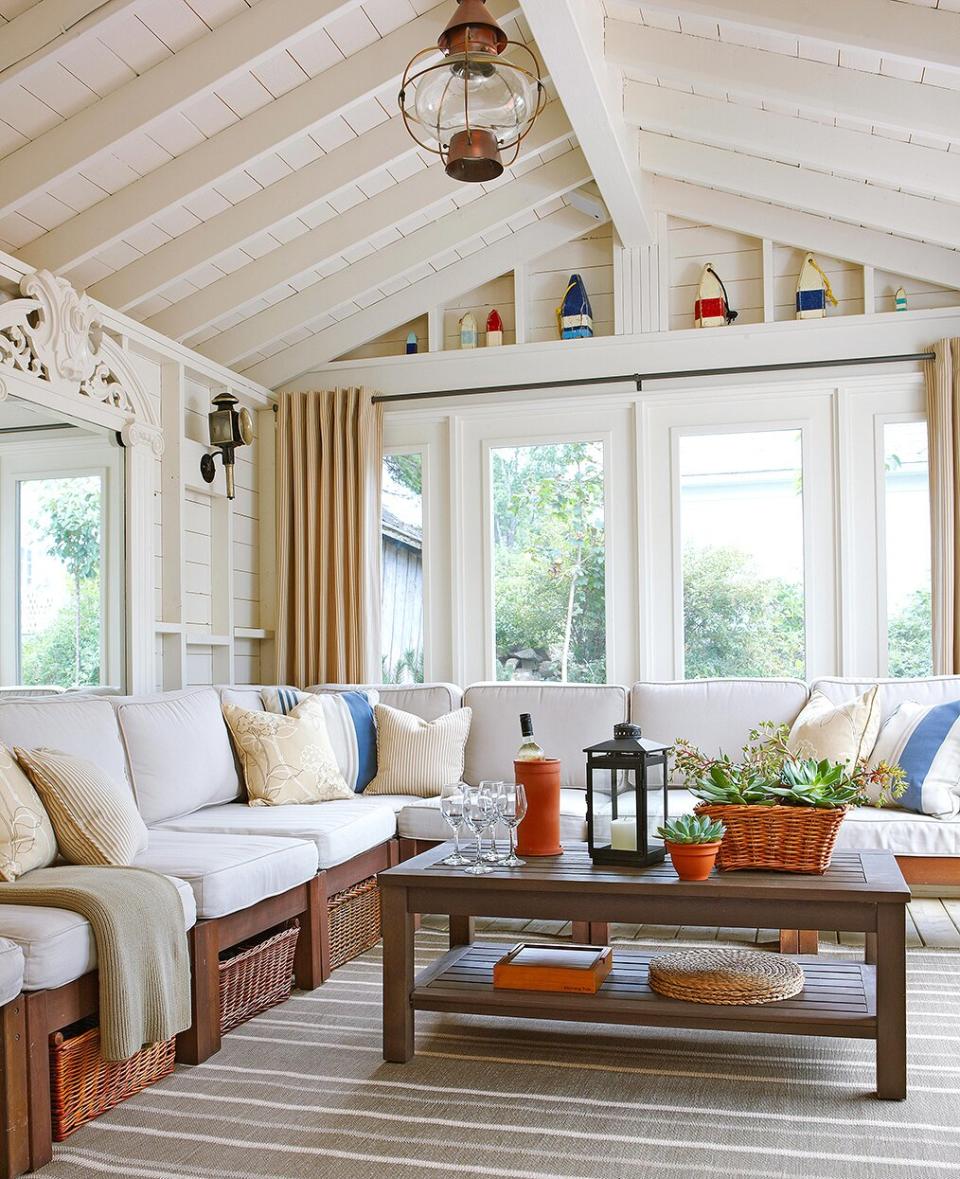What Is a Solarium, and How Is It Different from a Sunroom?
Sun lovers, listen up: You don't have to relocate to warmer climes to make the most of the sun, even indoors. Solariums and sunrooms are effective sun traps that allow you to bask in the rays of the sun year-round, summer through winter, absorbing the sun's warmth even on the crispest of days. As part of your home (often an addition or an attached room at the side of the house), a solarium or sunroom also provides additional space in which to relax or entertain family and friends, offering a cheaper, time-saving, and all-around more convenient alternative to upsizing and relocating.
A solarium or sunroom is an even bigger win if you're surrounded by scenic landscapes, as one of these window-lined rooms will leave you with an impressive panoramic view. There's no doubt that one of these rooms can make a great addition to your home, but which one to choose? Solariums and sunrooms are different kinds of rooms, so your decision will impact the final appearance and function of your space.
To help you make the right choice for your space, we've broken down the key differences between a solarium and a sunroom
What Is a Solarium?
A solarium is a room with a predominantly glass design and can be either a freestanding structure or an attachment to a home. Also referred to as a conservatory, a solarium has glass walls and a glass roof that maximize the intake of natural sunlight and provide expansive views of the immediate surroundings.

Nathan Kirkman
The closed walls of a solarium allow you to feel immersed in the outside world from the comfort of your home, taking in the pleasures of the four seasons while being sheltered from those less-pleasant effects, such as chilly winters, strong winds, and pouring rain. The same benefits apply to plants: Plants growing in a solarium are sheltered year-round, making solariums a popular option among gardeners.
Bear in mind that, without quality (and pricey) double-pane insulated glass, solariums can be subject to extreme temperatures, being frosty in the winter and baking hot in the summer. As a result, they are not the most energy-efficient option. A ceiling fan can help circulate the air and shades will keep the harsh sun rays out on hot days, but the temperature inside a solarium will fluctuate with the temperature outside more than it will in other rooms of your home—something to consider when deciding how your solarium is attached to the rest of your house.
Pros
Glass structure offers the most enjoyment of the outdoors
Climate-controlled environment serves as a good greenhouse for plants year-round
Provides additional living space
Cons
All-glass structure is high maintenance, and keeping it clean on the inside and outside may be challenging
Minimal insulation
Not very energy-efficient and tends to be more expensive to run
Requires more cleaning and maintenance costs, and can be expensive to build
Clear walls can present privacy concerns, especially when it's dark outside
What Is a Sunroom?
Sunrooms are rooms with many windows, though unlike solariums, they are not made entirely of glass. Sunrooms are an extension of the home, and as such they have a solid roof that provides a more enclosed environment. Skylights and large windows let plenty of sunlight into a sunroom, allowing you to enjoy the views and connect with the outside world from the comfort and shelter of your climate-controlled home. Many sunrooms have doors leading to a garden or patio, so you can easily step outside and embrace the elements should you wish to do so.

Stacey Branford
There are two types of sunrooms: three-season and four-season. As the name implies, three-season sunrooms are designed for use during three seasons of the year: spring, summer, and fall. As they are physically separated from the rest of the house by sliding patio doors or French doors and are not climate-controlled, they are typically not used in the chilly winter months. These types of sunrooms are simple to install, as they are typically built over an existing deck or patio.
Four-season sunrooms, in comparison, are integrated into the structure of the home and its existing HVAC system. They are not separated by a door, but rather serve as an extension of the living space, and can function as a dining room, playroom, or study. Insulated roofing, flooring, and walls control the room's temperature so the space can be enjoyed year-round. Four-season rooms tend to be more expensive and time-consuming to build, but they're usable all year long.
Pros
Four-season sunrooms with an integrated HVAC system can be enjoyed year-round
Provides a versatile additional living space
Low maintenance
Solid roof and enclosed design offer an increased sense of privacy
Cons
Does not let as much natural light in as a solarium
Expensive and time-consuming to install
Should You Pick a Solarium or a Sunroom?
While solariums and sunrooms may look similar, they are very different. Ultimately, the right decision comes down to personal preference, budget, privacy preferences, and what you intend to use the extra space for.
Solariums are a better option for anyone looking to maximize their time under the sun and connect with nature as, on top of the expansive views, they also provide the perfect sun trap for cultivating an inside garden. A sunroom is the way to go if you are on a budget and looking to invest in your home. If you have a growing family and require additional, light-filled space to use year-round as a playroom, living room, home office, or guest bedroom, you may also pick the practical sunroom over a solarium.

